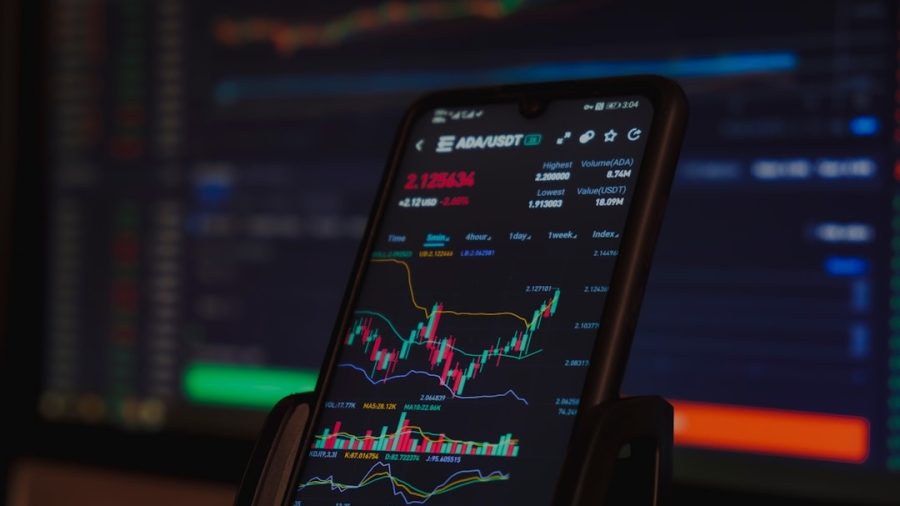Altcoins, a term derived from “alternative coins,” refer to any cryptocurrency other than Bitcoin. While Bitcoin was the first cryptocurrency, introduced in 2009 by an anonymous entity known as Satoshi Nakamoto, altcoins emerged to address various limitations of Bitcoin and to explore new functionalities within the blockchain ecosystem. Altcoins can be categorized into several types, including stablecoins, utility tokens, security tokens, and privacy coins.
Each of these categories serves distinct purposes; for instance, stablecoins are pegged to traditional currencies to minimize volatility, while privacy coins like Monero focus on enhancing user anonymity. This diversity allows altcoins to cater to a wide range of use cases, from decentralized finance (DeFi) applications to non-fungible tokens (NFTs). The fundamental differences between altcoins and Bitcoin lie in their underlying technology, consensus mechanisms, and intended use cases.
Bitcoin operates on a proof-of-work consensus mechanism, which requires significant computational power and energy consumption. In contrast, many altcoins utilize alternative consensus mechanisms such as proof-of-stake or delegated proof-of-stake, which can offer greater efficiency and lower energy costs. Furthermore, while Bitcoin is primarily viewed as a store of value or digital gold, many altcoins aim to provide specific functionalities or improvements over Bitcoin’s framework.
For example, Ethereum introduced smart contracts, enabling developers to create decentralized applications (dApps) on its blockchain. This innovation has spurred the growth of an entire ecosystem of altcoins that leverage Ethereum’s capabilities, showcasing the versatility and potential of alternative cryptocurrencies.
Key Takeaways
- Altcoins are alternative cryptocurrencies to Bitcoin, with different features and purposes.
- Investing in altcoins comes with risks such as high volatility, regulatory uncertainty, and security concerns.
- Potential rewards of investing in altcoins include high growth potential and the opportunity for portfolio diversification.
- Evaluating altcoin projects involves assessing their technology, team, community, and market potential.
- Altcoin investment strategies can range from long-term holding (HODLing) to short-term trading, depending on individual goals and risk tolerance.
- Altcoins can play a role in a diversified investment portfolio, offering potential for high returns but also higher risk.
- Altcoin investors should conduct thorough due diligence and research to avoid falling victim to scams and shady projects.
- The future of altcoins in the cryptocurrency market is uncertain, with trends and predictions constantly evolving.
The Risks of Investing in Altcoins: Volatility, Regulation, and Security Concerns
Volatile Market Conditions
Investing in altcoins carries inherent risks that potential investors must carefully consider. One of the most significant risks is volatility; altcoins are often subject to extreme price fluctuations that can occur within short time frames. Unlike Bitcoin, which has established itself as a more stable asset over time, many altcoins are still in their infancy and can be influenced by market sentiment, technological developments, or regulatory news.
Regulatory Uncertainty and Security Concerns
Regulatory uncertainty is another critical concern for altcoin investors. As governments around the world grapple with how to classify and regulate cryptocurrencies, the legal landscape remains fluid. Some altcoins may face scrutiny or outright bans in certain jurisdictions, which can adversely affect their value and usability. Additionally, security concerns are paramount in the cryptocurrency space; many altcoins have been associated with hacks, scams, or poorly executed projects that result in significant financial losses for investors.
Conducting Thorough Research and Staying Informed
The decentralized nature of cryptocurrencies means that investors often lack recourse in the event of fraud or theft. Therefore, conducting thorough research and staying informed about regulatory developments is essential for anyone considering investing in altcoins. It is crucial for investors to have a clear understanding of their risk tolerance and to carefully weigh the potential rewards against the risks involved.
Potential Rewards of Investing in Altcoins: High Growth Potential and Diversification

Despite the risks associated with altcoin investments, there are also considerable potential rewards that attract investors to this dynamic market. One of the most appealing aspects of altcoins is their high growth potential. Many altcoins have experienced exponential price increases in relatively short periods, driven by technological advancements, increased adoption, or market trends.
For instance, early investors in Ethereum witnessed remarkable returns as the platform gained traction for its smart contract capabilities and became a cornerstone of the DeFi movement. This potential for substantial returns can be particularly enticing for those willing to conduct thorough research and identify promising projects before they gain mainstream attention. Moreover, investing in altcoins offers diversification benefits that can enhance an investor’s overall portfolio performance.
By allocating funds across various cryptocurrencies with different use cases and market dynamics, investors can mitigate risks associated with holding a single asset like Bitcoin. Diversification can help smooth out volatility since different cryptocurrencies may respond differently to market events or trends. For example, while Bitcoin may be influenced by macroeconomic factors such as inflation or interest rates, specific altcoins may thrive due to technological innovations or niche market demands.
This strategic approach allows investors to capitalize on various opportunities within the cryptocurrency landscape while reducing their exposure to any single point of failure.
Evaluating Altcoin Projects: How to Assess the Viability and Potential of a Cryptocurrency
When considering an investment in an altcoin, it is crucial to evaluate the project’s viability and potential for success. One of the first steps in this assessment is to analyze the whitepaper—a comprehensive document that outlines the project’s goals, technology, and roadmap. A well-written whitepaper should provide clear insights into the problem the project aims to solve and how its proposed solution stands out from existing alternatives.
Investors should look for transparency regarding the project’s team members, their qualifications, and their track record in the cryptocurrency space. A strong team with relevant experience can significantly enhance a project’s credibility and likelihood of success. In addition to examining the whitepaper and team credentials, investors should also consider the project’s community engagement and market traction.
A vibrant community can indicate strong support for the project and its long-term sustainability. Platforms like GitHub can provide insights into development activity; frequent updates and contributions suggest an active team committed to improving the project. Furthermore, analyzing market metrics such as trading volume, market capitalization, and liquidity can help gauge investor interest and potential for growth.
By combining these factors—technical documentation, team expertise, community involvement, and market performance—investors can make more informed decisions about which altcoin projects warrant their attention and investment.
When it comes to investing in altcoins, two primary strategies have emerged: long-term HODLing (holding on for dear life) and short-term trading. HODLing involves purchasing altcoins with the intention of holding them for an extended period, often through market fluctuations and volatility. This strategy is based on the belief that certain projects will appreciate significantly over time as they gain adoption or achieve technological milestones.
Long-term investors typically conduct thorough research before selecting projects they believe have strong fundamentals and growth potential. By adopting a patient approach, HODLers aim to benefit from the overall upward trajectory of the cryptocurrency market. On the other hand, short-term trading focuses on capitalizing on price movements within shorter time frames—ranging from minutes to weeks.
Traders often employ technical analysis tools and chart patterns to identify entry and exit points for their trades. This strategy requires a keen understanding of market trends and a willingness to react quickly to changing conditions. While short-term trading can yield quick profits, it also carries higher risks due to the inherent volatility of altcoin prices.
Successful traders must remain disciplined and manage their emotions effectively to avoid making impulsive decisions based on fear or greed. Ultimately, choosing between HODLing and short-term trading depends on an investor’s risk tolerance, time commitment, and overall investment goals.
The Role of Altcoins in a Diversified Investment Portfolio
Diversifying Your Portfolio with Altcoins
Incorporating altcoins into a diversified investment portfolio can provide several advantages beyond mere exposure to cryptocurrencies. By including a mix of assets—such as stocks, bonds, real estate, and cryptocurrencies—investors can reduce overall portfolio risk while potentially enhancing returns. Altcoins often exhibit different price movements compared to traditional assets; during periods when stock markets may be underperforming due to economic downturns or geopolitical tensions, certain altcoins may thrive due to their unique use cases or technological advancements.
Non-Correlation and Portfolio Stabilization
This non-correlation can help stabilize an investor’s portfolio during turbulent times. Furthermore, as the cryptocurrency market continues to evolve and mature, altcoins are increasingly being recognized as legitimate investment vehicles with unique value propositions. For instance, projects focused on decentralized finance (DeFi) have gained significant traction by offering innovative financial services without intermediaries.
Tapping into Emerging Growth Opportunities
By allocating a portion of their portfolio to promising altcoin projects within this space—or other emerging sectors like NFTs or blockchain gaming—investors can tap into new growth opportunities that traditional markets may not provide. However, it is essential for investors to remain vigilant about their overall exposure to cryptocurrencies within their portfolios and ensure that they align with their risk tolerance and investment objectives.
Investment Considerations and Risk Management
Ultimately, investors must carefully consider their investment decisions and ensure that their exposure to altcoins aligns with their overall investment strategy and risk tolerance. By doing so, they can harness the potential benefits of altcoins while minimizing potential risks and maximizing returns.
Avoiding Scams and Shady Projects: Due Diligence and Research Tips for Altcoin Investors

The cryptocurrency landscape is unfortunately rife with scams and fraudulent projects that prey on unsuspecting investors. To navigate this treacherous terrain successfully, conducting thorough due diligence is paramount before investing in any altcoin project. One effective strategy is to scrutinize the project’s website for professionalism and transparency; legitimate projects typically provide detailed information about their team members, technology stack, partnerships, and roadmap milestones.
Additionally, investors should be wary of projects that promise guaranteed returns or exhibit aggressive marketing tactics without substantial backing. Another critical aspect of due diligence involves engaging with the community surrounding an altcoin project. Platforms like Reddit or Telegram often host discussions where current investors share insights about their experiences with the project.
A lack of community engagement or negative sentiment can be red flags indicating potential issues with the project’s legitimacy or viability. Furthermore, checking for audits conducted by reputable third-party firms can provide additional assurance regarding a project’s security measures and code integrity. By combining these research techniques—evaluating project transparency, engaging with community feedback, and verifying third-party audits—investors can significantly reduce their risk of falling victim to scams or investing in poorly conceived projects.
The Future of Altcoins: Trends and Predictions for the Cryptocurrency Market
As we look ahead to the future of altcoins within the broader cryptocurrency market, several trends are emerging that could shape their trajectory over the coming years. One notable trend is the increasing institutional interest in cryptocurrencies beyond Bitcoin; as more hedge funds and institutional investors allocate capital toward altcoins, this influx could lend greater legitimacy to these assets while driving up demand and prices. Additionally, advancements in blockchain technology—such as layer-2 solutions aimed at improving scalability—are likely to enhance the functionality of various altcoin projects and broaden their appeal among users.
Moreover, regulatory clarity is expected to play a pivotal role in shaping the future landscape of altcoins. As governments worldwide establish clearer frameworks for cryptocurrency regulation, this could foster greater confidence among investors while encouraging innovation within the space. Projects that prioritize compliance with regulatory standards may gain a competitive edge over those that do not adapt accordingly.
Furthermore, as decentralized finance continues to gain traction among users seeking alternatives to traditional financial systems, we may witness an explosion of new altcoin projects designed specifically for DeFi applications or other emerging sectors like NFTs or metaverse-related initiatives. Overall, while uncertainties remain in this rapidly evolving market, the future of altcoins appears promising as they continue to carve out their niche alongside Bitcoin in the digital economy.
For those interested in the broader implications of technology on investments, particularly in the realm of cryptocurrencies like altcoins, you might find the article on HTML styles useful. While it primarily focuses on web development, understanding HTML and web technologies can be crucial for navigating and analyzing online cryptocurrency platforms and exchanges effectively. You can read more about HTML styles and their importance in web technology by visiting this link. This foundational knowledge could enhance your ability to manage and research investments in digital currencies.
FAQs
What are altcoins?
Altcoins are alternative cryptocurrencies to Bitcoin. They can be based on Bitcoin’s source code or built from scratch, and they offer different features and functionalities compared to Bitcoin.
What are the risks of investing in altcoins?
Investing in altcoins carries several risks, including price volatility, lack of regulation, security vulnerabilities, and the potential for scams and fraudulent activities. Additionally, altcoins may have lower liquidity and trading volumes compared to Bitcoin, making them more susceptible to market manipulation.
What are the rewards of investing in altcoins?
Investing in altcoins can potentially offer higher returns compared to traditional investments, as some altcoins have experienced significant price appreciation in a relatively short period. Additionally, altcoins may offer innovative technologies and use cases that could disrupt various industries and provide long-term value.
How can investors mitigate the risks of investing in altcoins?
Investors can mitigate the risks of investing in altcoins by conducting thorough research on the project, team, technology, and market potential of the altcoin. Additionally, diversifying their investment portfolio, using secure and reputable cryptocurrency exchanges, and staying informed about market trends and regulatory developments can help mitigate risks.

